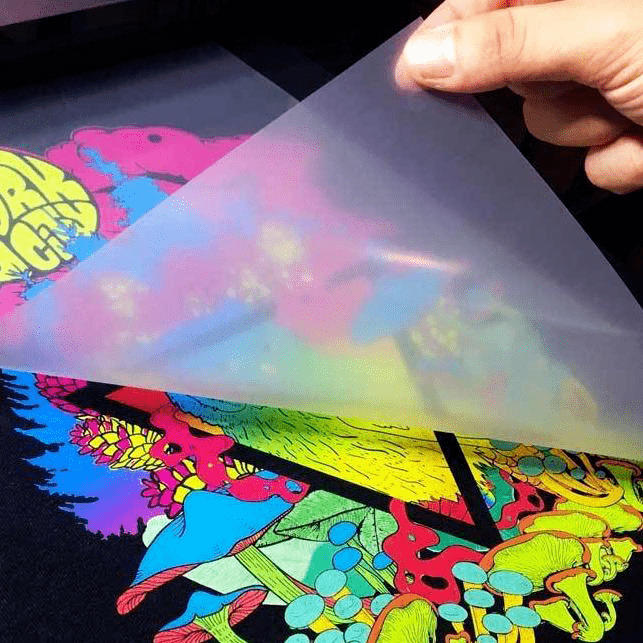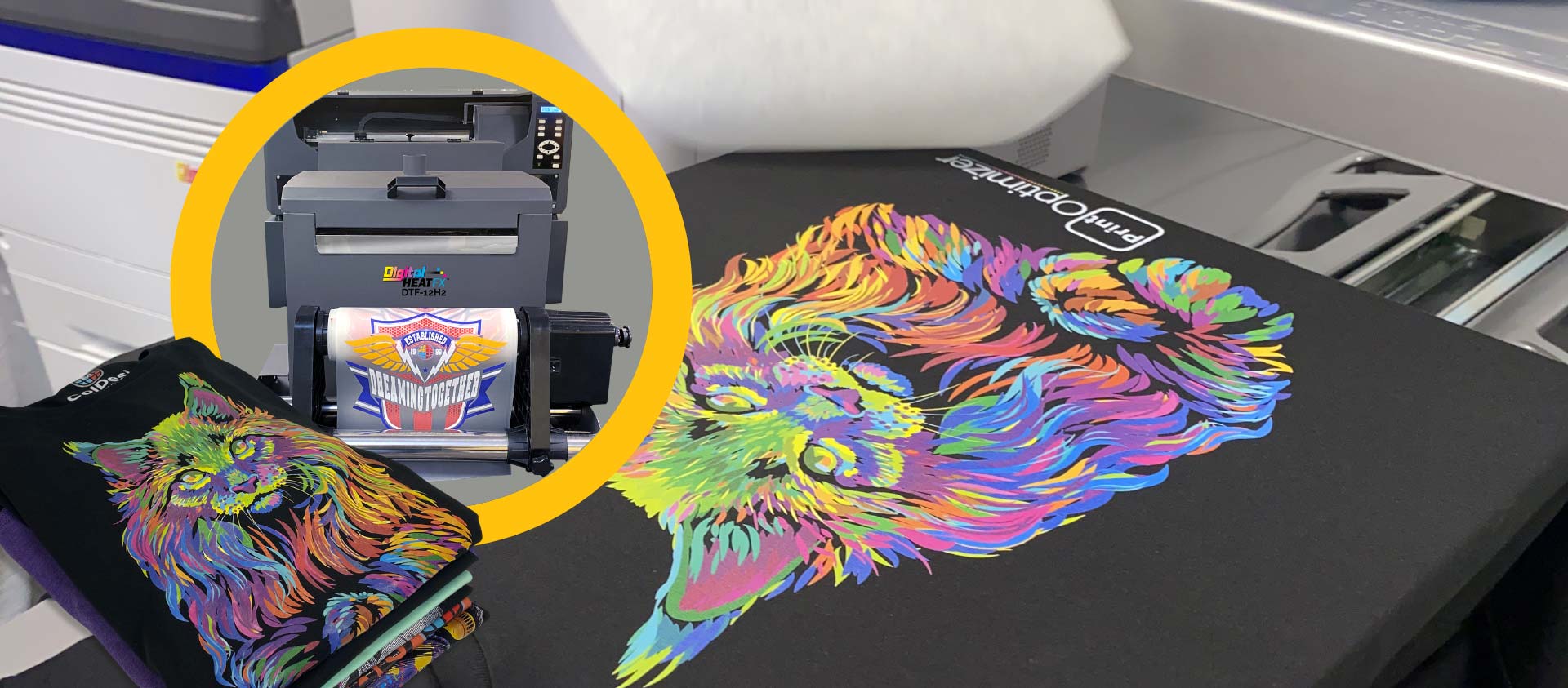The Ultimate DTF Printing Overview: Strategies, Materials, and Applications
The Ultimate DTF Printing Overview: Strategies, Materials, and Applications
Blog Article
From Concept to Creation: Letting Loose Creative Thinking With DTF Printing on Various Fabrics
Starting a creative journey commonly involves the fragile balance in between conceiving concepts and bringing them to life in substantial forms. In today's dynamic realm of textile layout, the application of Direct to Film (DTF) printing modern technology has actually reinvented the process of transferring elaborate layouts onto various textiles - DTF Printing. From the preliminary creation of a layout principle to the last creation on textile, the trip is loaded with opportunities waiting to be discovered. The fusion of development and artistry via DTF printing opens doors to a world where imagination recognizes no bounds.
Exploring the Perks of DTF Printing
Why is DTF printing increasingly preferred over other methods for its convenience and sturdiness in the textiles sector? Direct-to-film (DTF) printing has been gaining traction in the fabrics market because of its countless benefits that satisfy the progressing needs of the marketplace. One essential advantage of DTF printing is its adaptability in terms of the materials it can be put on. Unlike some conventional methods that are limited to certain fabric types, DTF printing can be utilized on a wide variety of products, including cotton, polyester, blends, and even leather. This flexibility enables better imagination and development in textile design.
Moreover, DTF printing uses exceptional longevity, making it excellent for creating durable styles on materials - DTF Printing. The prints produced with DTF are recognized for their vibrant shades and resistance to fading, cracking, or peeling - making certain that the final item preserves its quality even after numerous cleans or prolonged usage. This longevity makes DTF publishing an economical service for manufacturers looking to develop top quality, lasting styles on fabrics
Creating With DTF: Idea
Designing properly with DTF printing involves grasping the complexities of digital design software and comprehending exactly how to optimize designs for the best results on different fabrics. When producing layouts for DTF printing, it is vital to think about the material type, structure, and color to make sure that the end product satisfies expectations. Below are some pointers and tricks to boost your DTF design process:
Resolution is Key: Beginning with high-resolution photos to preserve quality and sharpness in your designs. Low-resolution photos can lead to a pixelated final product.

Shade Matching: Focus on shade accuracy when designing for DTF printing. Usage color monitoring devices to make sure that the shades in your layout convert properly onto the material.
Vector Graphics: Use vector graphics wherever possible to keep the top quality of your styles when scaling them to different dimensions. (DTF Printing)
Examination Prints: Always conduct test prints on sample textiles to inspect the colors, resolution, and general style high quality before full-scale production.
Choosing the Right Fabrics for DTF
When considering the optimal materials for DTF printing, the selection of product plays a crucial function in attaining the preferred high quality and toughness of the last published layouts. Picking the best fabric is essential for guaranteeing that the colors stick well, the design remains sharp and vivid, and the total appearance meets assumptions. Fabrics with a high polyester material are typically favored for DTF printing because of their capacity to hold the ink well and produce vivid prints. Polyester blends can also function successfully, offering a balance in between longevity and print high quality. Furthermore, materials with a smooth appearance tend to produce far better results as they provide a regular surface for printing, permitting exact outlining and color precision. It is necessary to think about the designated usage of the published material when choosing the material, as different materials provide varying degrees of stretch, washability, and breathability. By very carefully selecting the best textile for DTF printing, designers can enhance the long life and visual effect of their styles.
Step-by-Step DTF Printing Refine

After curing, the Web Site printed style is after that transferred onto the textile making use of a warm press. When the transfer is total, the textile is allowed to cool down before the transfer film is peeled off, leaving behind the vibrant and durable style on the fabric.

Showcasing DTF Work Of Arts
Have you ever admired the elaborate details and vibrant colors of DTF masterpieces showcased on various materials? DTF printing has transformed the means styles are transferred onto fabrics, permitting unmatched accuracy and splendor in colors. When these DTF masterpieces are placed on display, they astound target markets with their striking visuals and thorough workmanship.
Among the most fascinating facets of showcasing DTF work of arts is the versatility it offers. Whether it's a bold and attractive style on a t-shirt, a comprehensive pattern on a pillow case, or a custom print on a canvas bag, DTF printing permits unlimited possibilities. This adaptability enables designers and musicians to release their imagination and bring their visions to life on a variety of fabrics.
Additionally, the toughness of DTF prints makes sure that these masterpieces can withstand the test of time without losing their vibrancy. Whether shown in galleries, put on as trendy garments, or used as decorative accents in homes, DTF work of arts remain to excite visitors with their extraordinary top quality and aesthetic appeal.
Conclusion
Finally, DTF printing uses a versatile and cutting-edge method for releasing creativity on various fabrics. By checking out the benefits of DTF printing, developing with details pointers and tricks, picking appropriate textiles, look at this now and complying with a step-by-step printing process, artists can showcase their masterpieces effortlessly. This process enables the seamless change from principle to production, giving unlimited opportunities for imaginative expression.
In today's vibrant world of textile style, the utilization of Straight to Movie (DTF) printing modern technology has revolutionized the procedure of moving complex designs onto numerous fabrics.Creating efficiently with DTF printing includes mastering the intricacies of digital layout software program and understanding how to enhance layouts for the ideal results on numerous materials.When considering the optimal materials for DTF printing, the choice of material plays an essential function in attaining the preferred quality and longevity of the final published layouts. The next action is printing the style onto an unique DTF transfer film making use of a DTF printer with the ideal ink. By exploring the benefits of DTF printing, making with certain pointers and methods, picking appropriate fabrics, and following a detailed printing process, artists can display their work of arts with ease.
Report this page